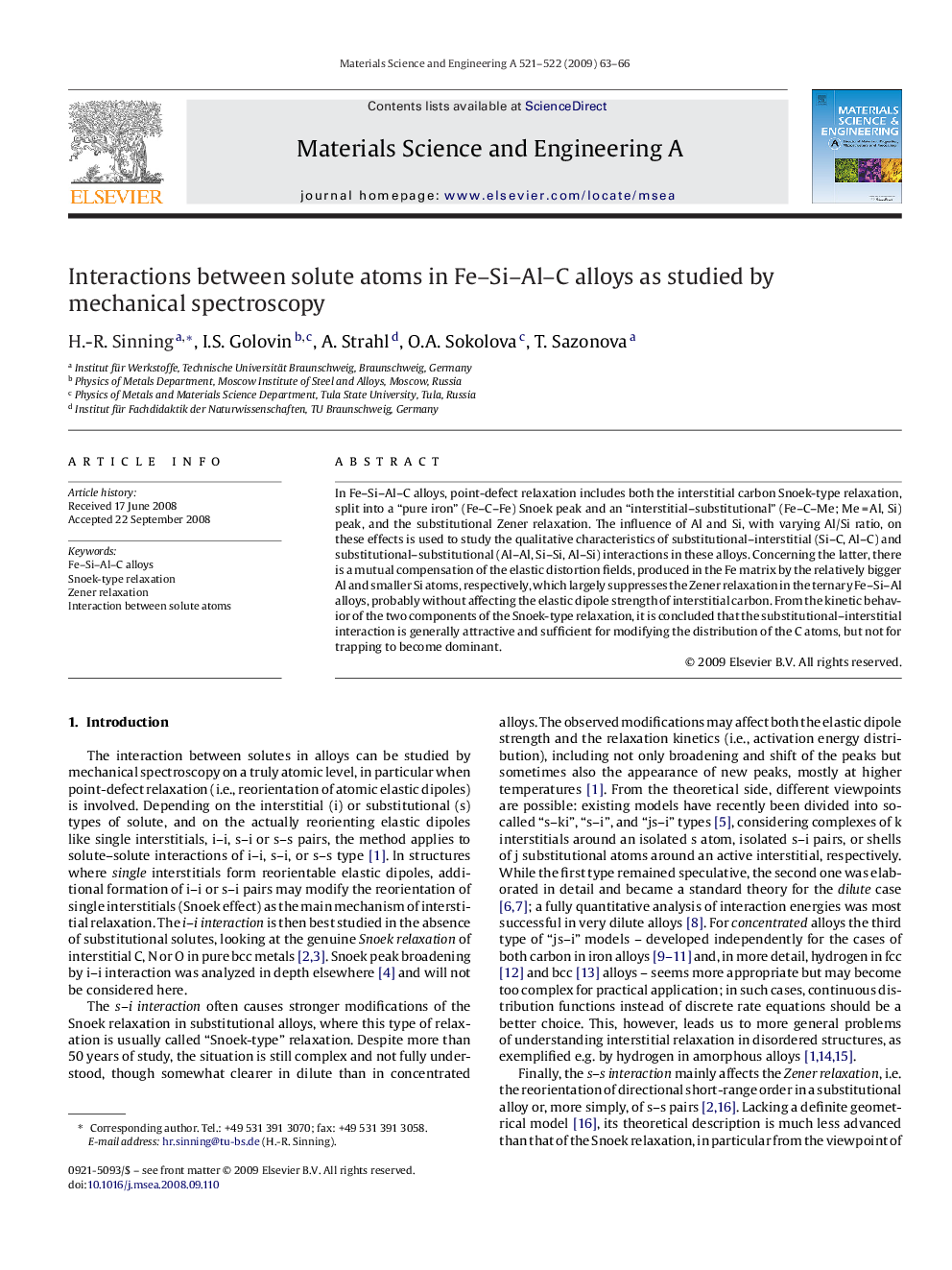| Article ID | Journal | Published Year | Pages | File Type |
|---|---|---|---|---|
| 1580042 | Materials Science and Engineering: A | 2009 | 4 Pages |
In Fe–Si–Al–C alloys, point-defect relaxation includes both the interstitial carbon Snoek-type relaxation, split into a “pure iron” (Fe–C–Fe) Snoek peak and an “interstitial–substitutional” (Fe–C–Me; Me = Al, Si) peak, and the substitutional Zener relaxation. The influence of Al and Si, with varying Al/Si ratio, on these effects is used to study the qualitative characteristics of substitutional–interstitial (Si–C, Al–C) and substitutional–substitutional (Al–Al, Si–Si, Al–Si) interactions in these alloys. Concerning the latter, there is a mutual compensation of the elastic distortion fields, produced in the Fe matrix by the relatively bigger Al and smaller Si atoms, respectively, which largely suppresses the Zener relaxation in the ternary Fe–Si–Al alloys, probably without affecting the elastic dipole strength of interstitial carbon. From the kinetic behavior of the two components of the Snoek-type relaxation, it is concluded that the substitutional–interstitial interaction is generally attractive and sufficient for modifying the distribution of the C atoms, but not for trapping to become dominant.
